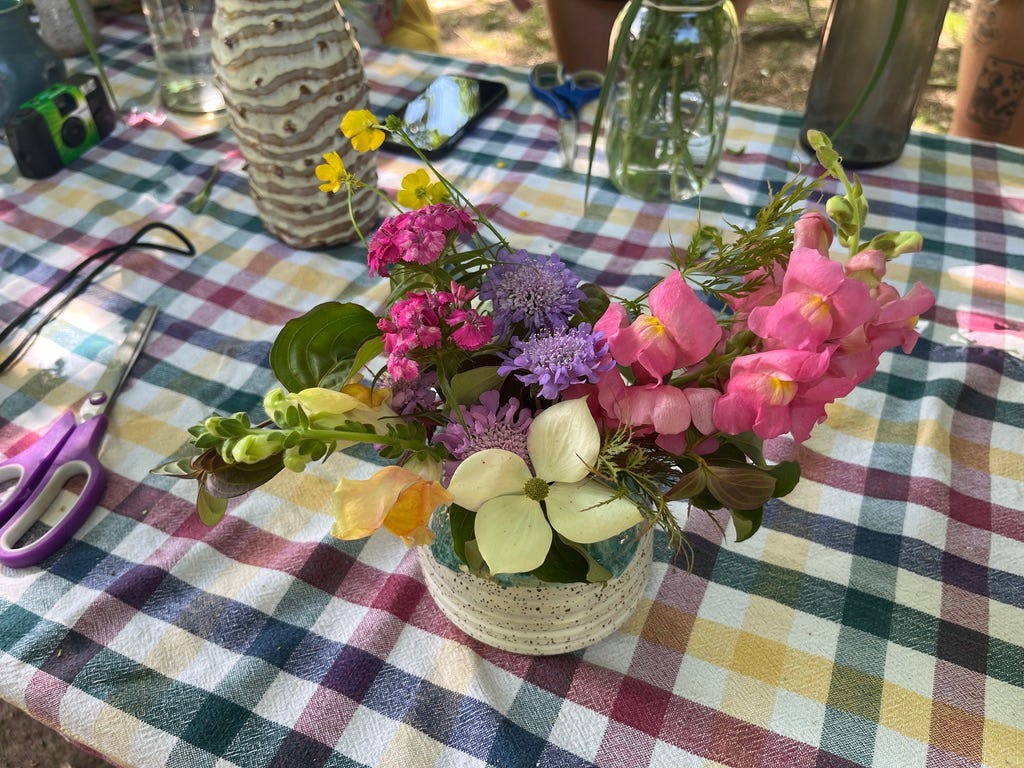How to spend time with friends without going broke
Our friendships don’t have to cost us so much
It’s expensive to do anything these days, but it can feel especially expensive to have friends. Every time I go out with folks, I have fun, but I also get a little jolt of anxiety when the bill arrives. One friend invited me to a very cool event a few weeks ago and I straight up never responded to her because the ticket price stressed me out.1
Even a $5 (or, let’s be real, $6-$8) coffee here and a $10+ glass of wine there adds up quickly when it comes to spending enough time with the people I love. And I’m far from alone: In one survey, nearly two-thirds of U.S. respondents said they’ve broken their budgets for social activities — a number that was even higher for Millennials and Gen Z. Another survey found that 89% of British respondents regularly exceed their monthly socializing budgets, with the top reason being the desire to spend time with friends and family. And this was all before the “but girl, the tariffs” economy we presently find ourselves in. I worry that, as consumer spending likely declines in the coming years, people will opt to see their friends less as a way to save money — when really we need to be deepening our communities more than ever.
While friendship is a priority that I’m willing to spend money on (I almost have a budget line item for flights to visit my faraway friends on the regular2), it’s also something I want to find more affordable ways to access and invest in.
Originally I planned on this article being a list of ideas for ways to hang out with your friends without spending a lot of money. But I think a lot of those resources already exist and I’m not sure I have much to add. (For example, I really enjoyed these 20 affordable friend date ideas from
.)Instead, I want to encourage you to be vulnerable with your friends about any monetary realities in your life. So much advice on the internet would have you believe that talking to friends about money is a horrible idea. But, generally, I’ve found the opposite to be true.
At its simplest, just saying why you’re turning down an expensive invite can allow your friend to feel understanding instead of blighted. A few weeks ago, one friend suggested a girls' night at a fancy restaurant. I told her I’d love to see her, but the spot she chose was a little outside of my budget comfort right now. Another woman in the group was able to speak up and express the same sentiment, and we were all able to find somewhere to meet that felt more financially comfortable. As
shared in a recent and relevant Instagram post, “Boundaries don’t ruin friendships, they protect them.”But I think it’s bigger than that. I think when we’re open with our close friends about money, it gives them the opportunity to co-create a friendship that supports each others’ financial needs. Instead of our friends costing us money, they can help us access feelings of abundance in new ways.
I’ve found that when I started being more open with one friend about my desire to tighten the purse strings, she was able to become an accountability partner in coming up with lovely, budget-friendly ways to be together. We shifted some of our usual coffee shop hangs to iced tea on my deck. She invited me over the other day to play dress up and shop her closet for clothes to borrow for an upcoming busy wedding season. (A good reminder that our friends can ultimately save us money with shared resources and support!) We still dream of luxe things to do together sometimes — the other day she mused that, when we’re feeling more financially free, we should do a staycation at a local spa — but that doesn’t make us any less excited about the activities that feel more accessible right now.
I’ve found that wanting to support friends’ financial realities can help me get more creative in finding cool but affordable things to do together. While one of the things I love about my friendship with Sam is our mutual love of going out and experiencing hot new restaurants or big-ticket shows together, when we’re aware that one or both of us is watching our spending, we can get just as excited about researching cheaper alternatives — and are often pleasantly surprised by what we find! Some highlights from recent visits have included free wine tastings at local wine shops, a seriously-impressive art exhibit at a free university museum, donation-based workout classes, free silent book club and poetry slam events at a local Raleigh bookstore, and a free MFA graduate dance performance at a local university. (City parks, local universities, galleries, small businesses, and even some museums often offer impressive lineups of free performances and other fun events, you just have to go looking for them!)3

I also wonder if, as friends start to look for more budget-friendly ways of being together, they’ll start creating new opportunities for others to gather, too. A few weekends ago, I attended a donation-based backyard music performance and a donation-based flower-arranging party at a local park4, both organized by friends seeking alternative ways to bring together community.

Have another idea? Tell us in the comments!!!
In The Art of Gathering, Priya Parker shares:
When we don’t examine the deeper assumptions behind why we gather, we end up skipping too quickly to replicating old, staid formats of gathering. And we forgo the possibility of creating something memorable, even transformative.
I think that’s what too many of us do when it comes to gathering with our friends: skip to replicating the standard, spendy options for going out, which can make us feel like we either have to blow our budgets or forfeit time with our friends. If, instead, we cut to the core of why we want to spend time with them — often simply to be together — we can envision transformative ways of doing that within the realities of our lives.
Sam note: The expense of travel is something we’ve worked together to offset. Last time I went to see Erin, she covered my flight with airline points. Last time she came to see me, we were at my mom’s house which Erin could drive to rather than flying.
Sam note: For those in the New York area (where just walking out the door can feel like it costs $200), I recommend signing up for The Skint, a newsletter of cheap and free things to do in the city, and
for art world happenings (most of which are free).

You are in no danger of me ever stopping inviting you to things.